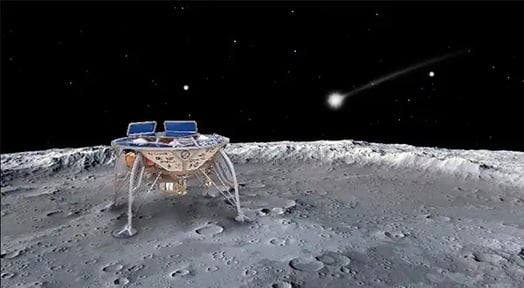A small spacecraft named Beresheet took off on a trip to the moon yesterday, vaulting an improbable group of privately funded Israeli scientists to heights achieved only by the world’s largest government space agencies.

The scheme, which grew out of a drunken conversation in Tel Aviv less than a decade ago, would be the first private space mission ever to reach the moon.
Calling all lunatics
Yariv Bash, a starry-eyed dreamer who moonlighted as a computer engineer, took a shot in the dark on Facebook in 2010 with a post that said, “Who wants to go to the moon?”
Two friends expressed immediate interest. After hashing out preliminary plans, the group formed a nonprofit called SpaceIL to help get their dream off the ground.
Initially, the amateur rocket scientists imagined they could use the winnings of Google’s Lunar X Prize ($20m) to reach the moon. But after Google postponed its award and ultimately canceled it altogether, the SpaceIL team had to find a new way to shoot for the moon.
‘Ehh, we’ll take the long way’
In 1973, early missions to the moon cost the modern equivalent of $2.6B per launch. But unlike state-sponsored space programs, SpaceIL doesn’t have unlimited cash to burn.
So, to keep costs of the project down, SpaceIL is taking the long way: Instead of shelling out for enough rocket fuel to bust right out of Earth’s orbit, the company is going to slowly slingshot out of orbit to use less fuel — extending a 250k-mile journey to 4m miles.
By tapping into an extended network of philanthropists and volunteers, SpaceIL was able to raise the $100m necessary to purchase a berth aboard a SpaceX rocket.
Next stop: The moon
But don’t hold your breath.
Last night at 5:45 pm EST, a SpaceX Falcon 9 Rocket successfully launched from Cape Canaveral, FL. Then, at 6:19 pm, the rocket released the washing machine-sized Beresheet into orbit.
Now, the Beresheet will begin its slow, slingshot process to the moon — a process that will take a couple of months.
In the meantime, several other space programs will continue working toward launching their own moon missions: India hopes to launch its lunar lander, Chandrayaan-2, in April.
Science And Research











